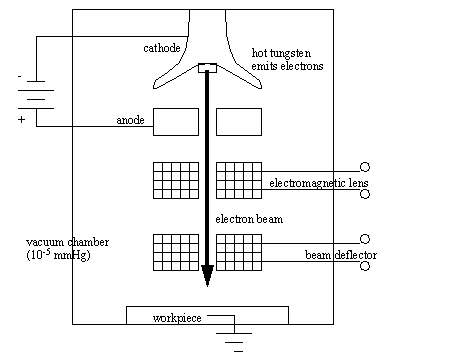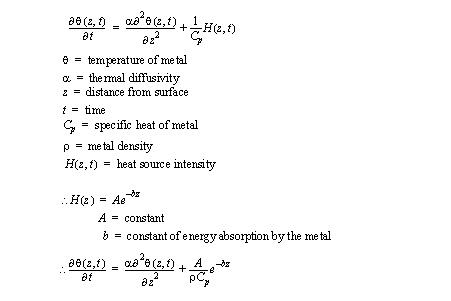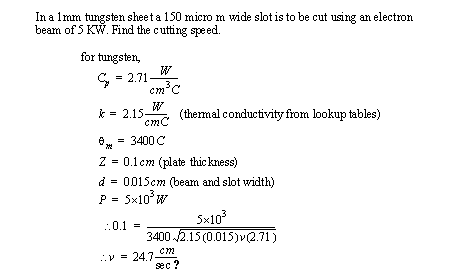1. ELECTRON BEAM MACHINING• The basic physics is an electron beam is directed towards a work piece, the electron heat and vaporize the metal. • electrons accelerated with voltages of approx. 150,000V to create velocities over 200,000 km/sec. • beam can be focused to 10 to 200 micro m and a density of 6500 GW/mm2 • good for narrow holes and slots. e.g. a hole in a sheet 1.25 mm thick up to 125 micro m diameter can be cut almost instantly with a taper of 2 to 4 degrees • the electron beam is aimed using magnets to deflect the stream of electrons • a vacuum is used to minimize electron collision with air molecules. • beam is focussed using an electromagnetic lens. 

• Some examples of cutting performance are given below, 

• typical energy requirements for cutting are, 
• e.g. to cut a 150 micro m wide slot in a 1mm thick tungsten sheet, using a 5KW power source, determine the cutting speed. 


• the heat rise can be estimated using a one dimensional heat flow equation 

• We can estimate the melting temperature with, 

- process done in vacuum, so it is best suited to small parts, but vacuum also reduces contamination - very high heat concentration reduces peripheral heating of surface less that 50 micro m from the cut the part is at room temperature. • Summary of EBM characteristics, - mechanics of material removal - melting, vaporization - tool - beam of electrons moving at very high velocity - specific power consumption = 450W/mm3/min - critical parameters - accelerating voltage, beam current, beam diameter, work speed, melting temperature - materials application - all materials - shape application - drilling fine holes, cutting contours in sheets, cutting narrow slots - limitations - very high specific energy consumption, necessity of vacuum, expensive machine. 1.1 REFERENCES1.2 PRACTICE PROBLEMS |